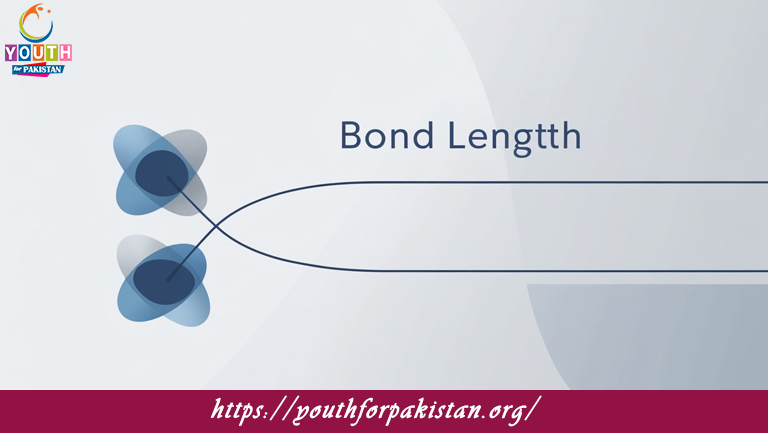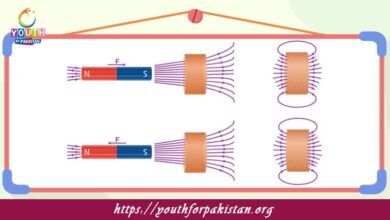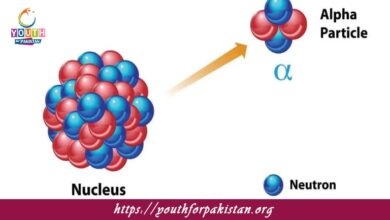Bond Length MDCAT MCQs with Answers

Welcome to the Bond Length MDCAT MCQs with Answers. In this post, we have shared Bond Length Multiple Choice Questions and Answers for PMC MDCAT 2024. Each question in MDCAT Chemistry offers a chance to enhance your knowledge regarding Bond Length MCQs in this MDCAT Online Test.
Bond length is defined as the distance between:
a) Two nuclei of bonded atoms
b) Two atoms in a molecule
c) Two electrons in a bond
d) Two protons in the nucleus
Which bond is generally the shortest?
a) Single bond
b) Double bond
c) Triple bond
d) Quadruple bond
The bond length in a molecule generally decreases with:
a) Increasing bond order
b) Increasing atomic radius
c) Decreasing bond strength
d) Increasing bond energy
In which of the following molecules is the bond length the longest?
a) H₂
b) N₂
c) O₂
d) F₂
The bond length of a single bond compared to a double bond is:
a) Shorter
b) Longer
c) The same
d) Unpredictable
In the case of isoelectronic species, the bond length:
a) Increases with increasing nuclear charge
b) Decreases with increasing nuclear charge
c) Remains constant
d) Is not related to nuclear charge
The bond length of a carbon-carbon triple bond is:
a) Longer than a single bond
b) Shorter than a double bond
c) Longer than a double bond
d) The same as a double bond
The bond length in a molecule with more than one resonance structure is typically:
a) The same as a single bond
b) Shorter than a single bond
c) Longer than a single bond
d) Equal to the average length of the resonance structures
The bond length in a diatomic molecule is affected by:
a) The size of the atoms
b) The bond order
c) The type of bond (single, double, triple)
d) All of the above
Which of the following has the shortest bond length?
a) H-F
b) H-Cl
c) H-Br
d) H-I
The bond length of a nitrogen-nitrogen triple bond is generally:
a) Longer than a single bond
b) Shorter than a single bond
c) The same as a double bond
d) The same as a single bond
The bond length of a molecule can be affected by:
a) Atomic radius
b) Electronegativity
c) Bond order
d) All of the above
The bond length in a molecule with a higher bond order compared to one with a lower bond order is:
a) Longer
b) Shorter
c) The same
d) Unpredictable
In the molecule H₂O, the bond length of the O-H bond is:
a) Longer than in H₂S
b) Shorter than in H₂S
c) The same as in H₂S
d) Not comparable
The bond length in a molecule can be determined using:
a) Spectroscopy
b) X-ray crystallography
c) Mass spectrometry
d) Nuclear magnetic resonance
Which of the following has the longest bond length?
a) H₂
b) CO
c) CH₄
d) HCl
The bond length of a carbon-hydrogen bond is generally:
a) Shorter in methane (CH₄) than in ethyne (C₂H₂)
b) Longer in methane (CH₄) than in ethyne (C₂H₂)
c) The same in both methane and ethyne
d) Variable depending on the temperature
In general, the bond length between atoms in the same group of the periodic table:
a) Decreases as you move down the group
b) Increases as you move down the group
c) Remains constant
d) Is not predictable
The bond length of a molecule with one double bond and one single bond is:
a) Average of the two bond lengths
b) Equal to the single bond length
c) Equal to the double bond length
d) Longer than the double bond
The bond length of an oxygen-oxygen single bond in O₂ is:
a) Longer than a carbon-carbon single bond
b) Shorter than a carbon-carbon single bond
c) The same as a carbon-carbon single bond
d) Variable
In a molecule with a bond order of 2.5, the bond length is expected to be:
a) Longer than a single bond
b) Shorter than a double bond
c) Longer than a double bond
d) The same as a double bond
The bond length of a nitrogen-hydrogen bond is typically:
a) Shorter than a carbon-hydrogen bond
b) Longer than a carbon-hydrogen bond
c) The same as a carbon-hydrogen bond
d) Not comparable
Which of the following will have the shortest bond length?
a) C-H in CH₄
b) C-H in C₂H₂
c) C-H in C₂H₄
d) C-H in C₆H₆
The bond length of a sulfur-hydrogen bond in H₂S is generally:
a) Longer than in H₂O
b) Shorter than in H₂O
c) The same as in H₂O
d) Unpredictable
Which factor does NOT affect bond length?
a) Bond order
b) Atomic radius
c) Electronegativity
d) Bond dissociation energy
In a molecule with mixed bond types, the bond length of a single bond is generally:
a) The same as the average bond length
b) Shorter than a double bond
c) Longer than a double bond
d) The same as a double bond
The bond length of a carbon-carbon bond in ethylene (C₂H₄) is:
a) Longer than in ethyne (C₂H₂)
b) Shorter than in ethyne (C₂H₂)
c) The same as in ethyne (C₂H₂)
d) Unpredictable
The bond length in a molecule with four sigma bonds and no pi bonds is:
a) The same as in a molecule with one sigma and three pi bonds
b) Longer than in a molecule with one sigma and three pi bonds
c) Shorter than in a molecule with one sigma and three pi bonds
d) Unpredictable
The bond length of a hydrogen-hydrogen bond in H₂ is:
a) Shorter than in HCl
b) Longer than in HCl
c) The same as in HCl
d) Not comparable
The bond length of a chlorine-chlorine bond in Cl₂ is:
a) Shorter than a fluorine-fluorine bond
b) Longer than a fluorine-fluorine bond
c) The same as a fluorine-fluorine bond
d) Unpredictable
The bond length in a molecule with a high bond order is typically:
a) Longer than that of a low bond order
b) Shorter than that of a low bond order
c) The same as that of a low bond order
d) Unpredictable
In the ozone molecule (O₃), the bond length of the O-O bonds is:
a) Longer than a single O-O bond
b) Shorter than a single O-O bond
c) The same as a double O-O bond
d) Unpredictable
The bond length of a phosphorus-hydrogen bond in PH₃ is generally:
a) Shorter than in NH₃
b) Longer than in NH₃
c) The same as in NH₃
d) Unpredictable
In a molecule where the central atom has expanded its octet, the bond lengths of the surrounding atoms:
a) Are longer than those in a molecule with a complete octet
b) Are shorter than those in a molecule with a complete octet
c) Remain the same
d) Are unpredictable
In the molecule CO₂, the bond length of the C=O bond is:
a) Longer than in formaldehyde
b) Shorter than in formaldehyde
c) The same as in formaldehyde
d) Unpredictable
The bond length of a bond between two identical atoms in a diatomic molecule is:
a) Shorter than that of a molecule with different atoms
b) Longer than that of a molecule with different atoms
c) The same as that of a molecule with different atoms
d) Unpredictable
The bond length of a chlorine-hydrogen bond compared to a bromine-hydrogen bond is:
a) Shorter
b) Longer
c) The same
d) Unpredictable
The bond length in a molecule can be affected by:
a) The presence of lone pairs
b) The bond order
c) The size of the atoms
d) All of the above
In a molecule where atoms are larger, the bond length is typically:
a) Shorter
b) Longer
c) The same
d) Unpredictable
The bond length of a double bond is generally:
a) Longer than a single bond
b) Shorter than a single bond
c) The same as a single bond
d) Variable
If you are interested to enhance your knowledge regarding Physics, Chemistry, Computer, and Biology please click on the link of each category, you will be redirected to dedicated website for each category.





